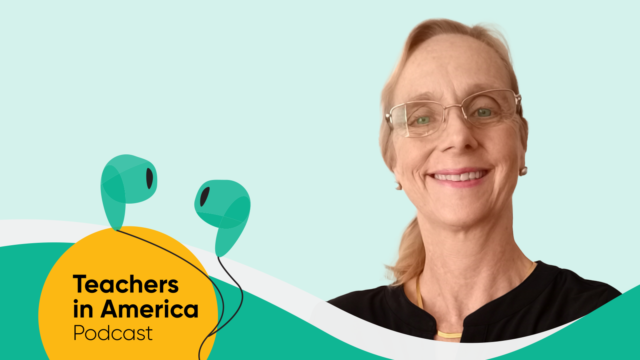
The new Next Generation Science Standards are about a lot more than just shifting what topics are taught when. They actually represent an entirely different approach to teaching and learning; and this new approach focuses a lot less on teachers delivering content and information and much more on students learning it on their own.
Below are five goals you’ll need to achieve in your teaching to transition your science class to an NGSS curriculum.
1. Less Memorization, More Scientific Explanation
Each lesson in HMH Science Dimensions begins with a phenomenon for students to explain, often with a video clip. One video clip in middle school describes the sudden appearance of an island off the coast of Japan; students are asked to explain how and why it happened. The learning experiences that make up the lesson give students clues and evidence they'll need to combine with their own reasoning to make a claim—a scientific explanation about what's going on.
The students are also going to really need to understand the evidence that supports that claim. This approach provides engagement and gives students a purpose for understanding the science concepts in the lesson. That way, the emphasis is on using concepts and applying them to situations rather than memorizing the definitions of the terms.
2. Less Lecture, More Student-Centered Learning
Students learn better when they make their own discoveries, so instead of lessons being built around teacher lectures, NGSS envisions more student-centered learning. The teacher is just as important as ever, but his or her role has changed. Now, the goal for teachers is to provide learning expectations for students, monitor students as they learn in their own way, and support that learning with questions and guidance. The teacher is absolutely critical to making sure that students realize their potential.
In a similar fashion, the print and digital materials for HMH Science Dimensions include some reading but mix it up with lots of quick activities to do and thought-provoking questions to answer. The goal of the materials is to provide evidence students can use to build their own understanding of the scientific practices, content, and connections involved in the lesson.
3. Less Reliance on Summative Assessment, More Formative Assessment Throughout
In HMH Science Dimensions, there's not such a rigid separation between learning and formative assessment. Students constantly move back and forth between doing activities, answering questions, and reading. Throughout all of these learning experiences, even the questions, the goal is for students to gather their own evidence.
4. Fewer Cookbook Labs, More Open-Ended Investigations
In one activity from a middle school earth science unit of HMH Science Dimensions, students design their own model of how continents might have moved and formed a super continent in the past. Some students may have wanted to model it out of paper because they're good at cutting things out and can fit them together really easily; other students might be more engaged if they use something like clay. Others might want to do a computer animation.
The emphasis has shifted from everyone having to follow the same procedural steps in the same way. Instead, we want students to understand the strengths and limitations of any model for a complex phenomenon. In the same way, the You Solve It! online simulations are open-ended, so students can observe how their choices affect outcomes. With these digital activities, students can even try out more than one approach. A lot of times, students learn more when they get unexpected results and consider what they might try differently. It's a lot like my own research! I've learned so much more, when I've been wrong the first time.
5. Less Oversimplification, More “All Students, All Standards”
We all know it can be a real challenge to meet the needs of students in our classrooms that are at really different levels, and another focus of the NGSS is to ensure all students have access to rich science learning experiences. HMH Science Dimensions provides a wide variety of simple activities to do just that. In addition, the teacher materials provide frequent tips for how to scaffold the activity, so students of different abilities can experience it in a very rich way.
Another strategy I like to use is team learning or group activities. This can allow your really advanced students learn more when they have to help those who are less prepared; and sometimes, the struggling students are actually more able to engage and learn more from their peers than from their teacher.
The views expressed in this article are those of the author and do not necessarily represent those of HMH.
***
*Next Generation Science Standards and logo are registered trademarks of Achieve. Neither Achieve nor the lead states and partners that developed the Next Generation Science Standards was involved in the production of, and does not endorse, HMH Science Dimensions.
*This blog is based on a Professional Development video found within HMH Science Dimensions.
Related Reading















